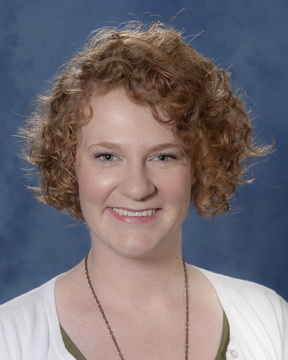The Shirley D. Curson Education Plus Fund in Planetary Sciences and LPL (formerly the Shandel Education Plus Fund) was established by Shirley Curson, a generous donor and friend of LPL, for the purpose of supporting travel expenses outside the state of Arizona during summer break. The award is open to students in the Department of Planetary Sciences and Lunar and Planetary Laboratory who propose to fund study, museum visits, special exhibits, seminars, instruction, competitions, research and other endeavors that are beyond those provided by the normal campus environment and are not part of the student’s regular curriculum during the recipient’s school year.
2014 Curson Travel Award to Michelle Thompson
Michelle Thompson
The surfaces of airless bodies such as the Moon and asteroids are continually being modified by micrometeorite impacts and energetic ions from the solar wind. Such interactions are collectively referred to as space weathering and they cause changes in the morphology, microstructure, and chemistry of surface materials. The culmination of these interactions is the alteration of the optical properties of surface soils. My dissertation focuses on the effects of these space weathering processes and how they manifest themselves in soils on airless bodies. I study the effects of space weathering in samples from the Moon and near-Earth asteroid Itokawa. The lunar samples I use in my analysis were returned from the Moon by the Apollo missions and the samples from Itokawa were collected by the Japanese Aerospace Exploration Agency’s Hayabusa mission.
The effects of space weathering are concentrated in the outer one hundred nanometers of soil grain surfaces. In order to study these features at such a fine scale, I use an instrument called a transmission electron microscope (TEM). The TEM allows us to get crystal structure and chemical information from samples at very small scales—the perfect tool for giving us insight into space weathering processes. One of the space weathering features I have been analyzing are iron nanoparticles in lunar soil, with each particle measuring only a few nanometers in size. These nanoparticles are produced through various space weathering processes and are responsible for changing the optical properties of the surface soils. Until recent advances in electron microscopy, scientists were unable to study the oxidation state Fe within individual particles. By using a state-of-the-art TEM, our study suggests these nanoparticles are not composed entirely of metallic iron, but a mixture of oxidation states. This has important implications for the nature of space-weathering processes on the surfaces of airless bodies. I presented my findings at the Microscopy and Microanalysis conference in Hartford, CT. The paper I submitted for this conference was selected for a Presidential Scholar award. This conference allowed me the unique opportunity to present my work to both the planetary science community and the community of microscopy experts.

